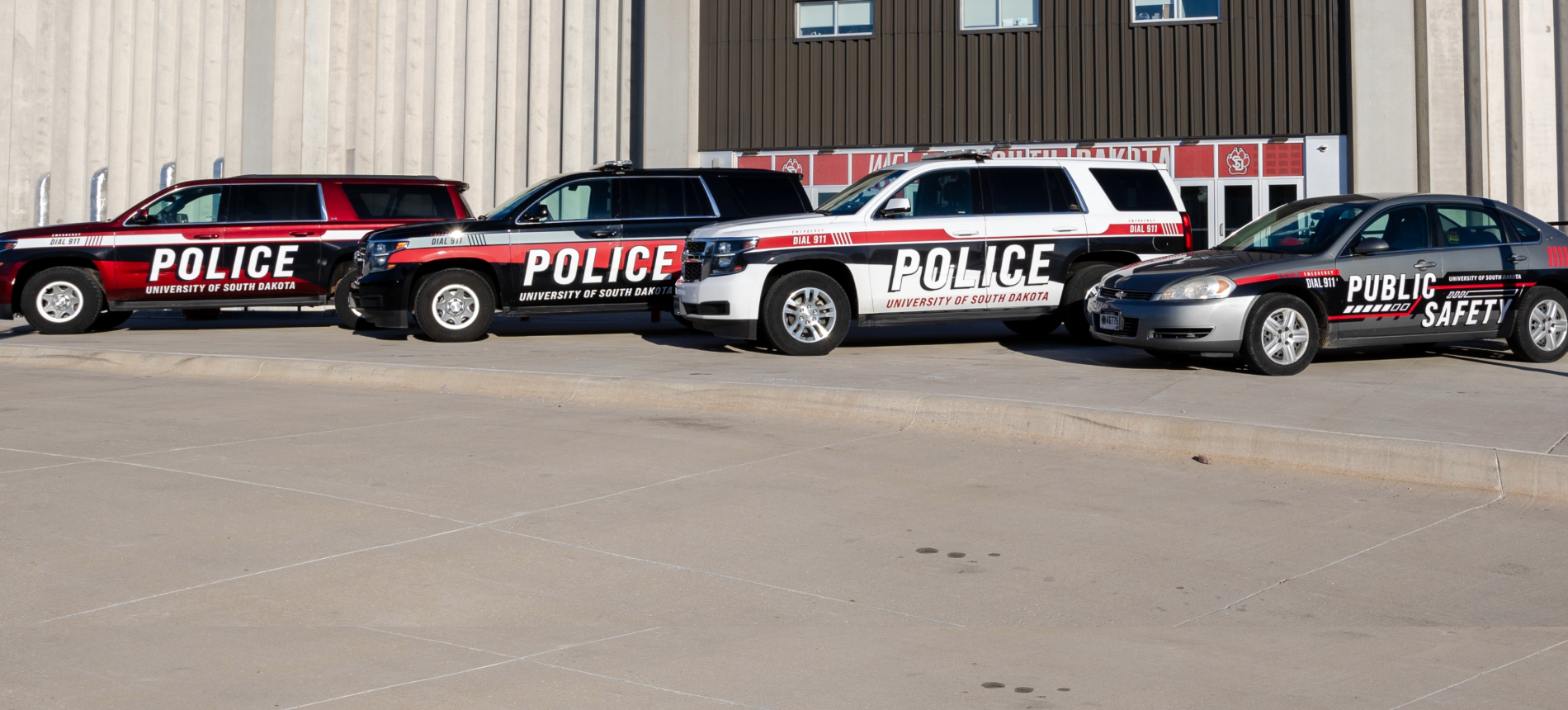
University Police
OfficeEnsuring a safe and secure environment for the students, staff and the university community.
Contact Us
University Police
Davidson Building
414 E. Clark St.
Vermillion, SD 57069
414 E. Clark St.
Vermillion, SD 57069
Office Hours
24/7 Assistance
For Emergencies, call 911
Protecting The Pack.
The University of South Dakota Police Department (UPD) is a full-service, professional law enforcement agency dedicated to the safety of our campus community. Staffed by certified police officers, trained dispatchers, and student employees, UPD provides the same level of service and authority as municipal police. Our officers meet rigorous state certification standards, receive advanced training in specialized areas of policing, and work closely with local law enforcement and community partners to ensure a safe and supportive environment at USD.
Meet the Department
Get to know the dedicated professionals at the University Police Department. Our team is comprised of skilled individuals who are committed to ensuring the safety and security of the campus community. Drawing on their expertise and experience, our officers work tirelessly to uphold a secure environment for all students, faculty and staff.















